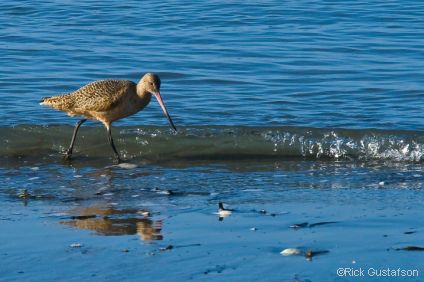Birding Humboldt Bay
 No coverage of what makes Humboldt Bay special would be complete without mention of its birdlife. You may know that the Bay is a mecca for birders, but did you know that it is a site of hemispheric importance to shorebirds, and that several types of birds probably would not survive without it? It’s not just special — it’s crucial!Over 100 bird species use Humboldt Bay’s waters, mudflats and marshes. These include ducks, grebes, coots, avocets, plovers, sandpipers, jaegers, murres, gulls, cormorants, pelicans, herons, ospreys and kingfishers.When and where is Humboldt Bay birding best? Keep these general principles in mind:
No coverage of what makes Humboldt Bay special would be complete without mention of its birdlife. You may know that the Bay is a mecca for birders, but did you know that it is a site of hemispheric importance to shorebirds, and that several types of birds probably would not survive without it? It’s not just special — it’s crucial!Over 100 bird species use Humboldt Bay’s waters, mudflats and marshes. These include ducks, grebes, coots, avocets, plovers, sandpipers, jaegers, murres, gulls, cormorants, pelicans, herons, ospreys and kingfishers.When and where is Humboldt Bay birding best? Keep these general principles in mind:
- ~ Bird abundance and diversity on the Bay are highest from August to April.
- ~ High tides are usually better than low tides. Refer to a tide chart and try to arrive at your viewing location when a rising tide is between three and four feet. Birds will be pushed closer by the incoming water.
There are dozens of worthwhile viewing locations, but here are some of my favorites.





